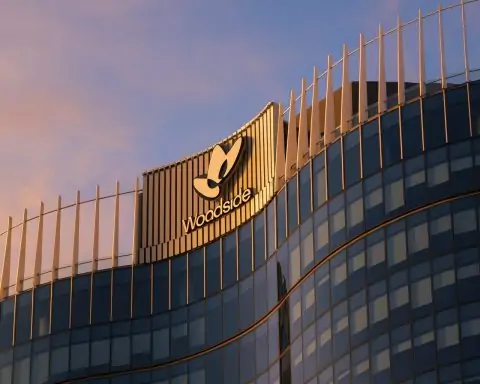Dick’s Sporting Goods stock (NYSE: DKS) stabilized on Wednesday, November 26, 2025, as investors continued to digest this week’s heavy news flow: a messy but strategic Foot Locker restructuring, stronger-than-expected core DICK’S results, a higher 2025 outlook, and a flurry of new analyst ratings and political/institutional trading disclosures.
Dick’s Sporting Goods stock today: modest rebound after a volatile earnings week
By late trading on Wednesday, DICK’S Sporting Goods shares were changing hands near $207.60, up about 0.4% on the day, recovering a sliver of Tuesday’s post-earnings slide. The stock traded between roughly $204 and $212 intraday, after opening just below $203, with volume over 2.7 million shares, well above normal turnover.
Even after today’s bounce, DKS remains well off its recent highs. Over the last year, the stock has traded in a $166.37–$254.60 range, with a market value around $16–17 billion and a forward P/E in the mid‑teens. [1]
Tuesday’s earnings reaction was driven less by the core DICK’S business—which continues to post solid growth—and more by the Foot Locker acquisition, where a deep restructuring and large one‑time charges rattled investors. Reuters reported that shares dropped in early trading on Tuesday after the company warned of hefty charges tied to Foot Locker, even as management raised its full‑year outlook. [2]
Q3 2025 results: strong core DICK’S business, noisy consolidated earnings
DICK’S reported results for the third quarter ended November 1, 2025 on Tuesday. Management now separates performance into two pieces:
- the “DICK’S Business” (legacy banners like DICK’S Sporting Goods, Golf Galaxy, House of Sport, Public Lands and GameChanger), and
- the newly acquired Foot Locker Business (Foot Locker, Kids Foot Locker, Champs Sports, WSS and atmos). [3]
Key takeaways from Q3:
- Comparable sales for the DICK’S Business rose 5.7%, driven by both higher average ticket and increased transactions, and accompanied by gross margin expansion. [4]
- Consolidated net sales were about $4.17 billion, roughly 36% higher year‑on‑year, helped by the addition of Foot Locker. [5]
- On a GAAP basis, diluted EPS was $0.86, heavily impacted by merger and integration costs. On a non‑GAAP basis, consolidated EPS was $2.07, while the standalone DICK’S Business delivered non‑GAAP EPS of $2.78, up slightly from $2.75 a year earlier. [6]
The Street’s view of the quarter is mixed:
- MarketBeat and Barron’s both highlight that consolidated adjusted EPS of around $2.07 and revenue of $4.17 billion fell short of consensus estimates, which were closer to $2.70 per share and $4.45 billion in sales, even though the core DICK’S Business beat its own EPS benchmark. [7]
- Yet, the underlying DICK’S Business—excluding Foot Locker—continues to show solid mid‑single‑digit comp growth, healthy margins and strong returns on equity in the mid‑30s. [8]
In short: core DICK’S is performing well, but Foot Locker‑related noise is dominating the headline numbers and near‑term sentiment.
Foot Locker acquisition: $500–$750 million “clean out the garage” reset
The biggest overhang on DKS shares this week is the scope of the Foot Locker reset.
Management disclosed that integrating Foot Locker will require pre‑tax charges of between $500 million and $750 million, tied to: [9]
- closing underperforming Foot Locker locations,
- clearing out unproductive and outdated inventory, and
- broader merger and integration costs.
Reuters notes that these charges come on top of Foot Locker’s already pressured profitability, with gross margin expected to drop by 1,000–1,500 basis points and comparable sales forecast to decline mid‑ to high‑single digits in the near term. [10]
Executives have leaned into a vivid metaphor: “clean out the garage.” On the Q3 earnings call, Executive Chairman Ed Stack explained that DICK’S plans to aggressively mark down and liquidate older, underperforming Foot Locker SKUs and to reassess unprofitable stores. The idea is to start 2026 with a much cleaner inventory position and a more focused store base. [11]
Recent coverage from Business Insider, Fox and Investopedia adds more color: [12]
- DICK’S will close an unspecified number of Foot Locker stores, starting with a handful of test markets.
- The company is testing revamped store layouts and merchandising in 11 Foot Locker pilot locations and reports encouraging early results.
- Management expects Foot Locker to be earnings‑accretive starting next fiscal year, once the clean‑up is largely complete, but acknowledges that near‑term profits from Foot Locker will be close to break‑even.
For now, the reset amplifies execution risk. But if DICK’S can successfully apply its merchandising, vendor relationships (especially with Nike) and omnichannel playbook, the acquisition could eventually expand the company’s footprint and bargaining power in athletic footwear. [13]
2025 outlook raised for the core business
Despite the Foot Locker turbulence, DICK’S raised its 2025 outlook for the core DICK’S Business:
- Non‑GAAP EPS (DICK’S Business only): now $14.25–$14.55, up from prior guidance of $13.90–$14.50. [14]
- Net sales: now projected at $13.95–$14.0 billion. [15]
- Comparable sales: expected to rise 3.5%–4.0% for 2025, vs. a previous range of 2.0%–3.5%. [16]
Benzinga notes that DICK’S also nudged up reported (GAAP) EPS guidance into the same $14.25–$14.55 range, reflecting confidence that Foot Locker’s drag can be contained while the DICK’S Business continues to grow. [17]
Wall Street commentary generally acknowledges this guidance raise as a sign of underlying strength:
- The Wall Street Journal highlighted that comp‑store growth and a higher full‑year outlook underscore the resilience of the DICK’S Business, even though the market punished the stock for the Foot Locker overhang. [18]
- Several analysts expect Foot Locker to transition from a headwind in 2025 to a tailwind from late 2026 onward, once inventory and store rationalization are largely complete. [19]
Capital returns: buybacks and a rich dividend keep flowing
While tackling Foot Locker, DICK’S is still returning substantial capital to shareholders.
According to the company’s Q3 release: [20]
- DICK’S repurchased 1.4 million shares in the first 39 weeks of 2025 at an average price of $218.65, for a total of about $298.7 million.
- The company still has approximately $3.2 billion remaining under existing share repurchase authorizations, giving it significant firepower for future buybacks.
- On November 24, 2025, the board declared a quarterly dividend of $1.2125 per share, payable on December 26, 2025 to shareholders of record as of December 12, 2025. At today’s share price, that equates to an annualized dividend of roughly $4.85 per share, or a yield in the neighborhood of 2.3%.
MarketBeat notes that the dividend payout ratio currently sits in the low‑to‑mid‑30% range, leaving room for both continued capital investment and shareholder returns. [21]
Simply Wall St, in an analysis published Wednesday, argues that the combination of raised guidance and ongoing buybacks could be a “game changer” for DKS over the long term, estimating a fair value near $240 per share—about mid‑teens upside from recent prices—while stressing that Foot Locker execution remains the main risk. [22]
Analyst reaction on November 26: cautious but broadly constructive
Wednesday’s news flow included a cluster of fresh analyst calls responding to the Q3 print and Foot Locker plan:
- UBS reiterated a Buy rating with a $275 price target, citing confidence in DICK’S ability to deliver at least $15 EPS in 2026 as the integration matures. UBS acknowledges the Foot Locker “noise” but views the stock as attractively valued given its growth, margins and scale. [23]
- Wells Fargo maintained an Equal Weight rating but raised its price target by about 2% to $225, noting that risk/reward is more balanced after the recent pullback and that core trends remain healthy despite Foot Locker uncertainty. [24]
- TD Cowen kept a Hold rating and cut its target to $226 from the mid‑$230s, arguing that the wide range of Foot Locker charges and still‑evolving store strategy make forecasting 2026–2027 earnings more challenging. [25]
- DA Davidson reduced its target from $270 to $245 but reaffirmed a Buy stance, emphasizing that while turning around Foot Locker is not guaranteed, DICK’S track record and vendor relationships justify a positive long‑term view. [26]
- Telsey Advisory Group lowered its price target to $245 and reiterated an Outperform rating, saying DICK’S is “uniquely positioned” to fix Foot Locker but warning that the market may remain skeptical until execution is visible in the numbers. [27]
Across the broader Street:
- Data compiled by Public.com shows 18 analysts currently covering DKS with an overall “Buy” consensus, where 39% rate it a Strong Buy, 22% a Buy and the remainder a Hold, with no active Sells. The average price target sits around $243 per share. [28]
- MarketBeat and other trackers put the larger consensus (including older ratings) closer to $234–$240 per share, with a mix of Buy, Hold and a small number of Sell ratings. [29]
Taken together, Wednesday’s analyst commentary paints a picture of cautious optimism: most firms still see upside in DKS, but the range of price targets has narrowed as Foot Locker introduces a meaningful execution swing factor.
Political and institutional trading: who’s been moving in DKS?
Two additional headlines from this week speak to who owns—and who is trimming—DICK’S Sporting Goods stock:
- On Wednesday, MarketBeat reported that Representative Lisa C. McClain (R‑Michigan) disclosed a sale of between $1,001 and $15,000 of DKS shares on October 30, alongside similar‑sized trades in several other companies. The article also recapped DICK’S recent earnings and consensus price targets. [30]
- Earlier this week, another MarketBeat piece highlighted that Vanguard Group Inc. holds about 5.7 million DKS shares, roughly 7.1% of the company, valued at around $1.13 billion as of its latest filing. Vanguard trimmed its position by about 2.5% in Q2 but remains the largest shareholder, and more than 89% of DKS shares are held by institutions. [31]
These flows don’t change the company’s fundamentals, but they underscore that DKS is heavily institutionally owned, with both Wall Street firms and policymakers watching the story closely.
How today’s DKS stock setup looks after the dust settles
Putting all of Wednesday’s developments together, the DICK’S Sporting Goods stock story on November 26, 2025 looks like this:
- Core operations are strong. Mid‑single‑digit comp growth, high returns on equity and margin expansion in the DICK’S Business underpin management’s confidence and the higher 2025 outlook. [32]
- Foot Locker is a self‑inflicted headwind—by design. The company is choosing to take large charges upfront to close weak stores and clear inventory, with an aim to reset the brand for profitable growth from 2026 onward. That strategy is painful in the short term but could unlock value if execution is successful. [33]
- Valuation is no longer stretched. At roughly $207 per share and a P/E in the mid‑teens, DKS trades below average analyst targets in the mid‑$230s to low‑$240s and below some independent fair‑value estimates around $240–$245, though those models assume Foot Locker ultimately contributes to earnings rather than permanently diluting them. [34]
- Shareholder returns remain a clear priority. A dividend yield near 2–2.5% and a multi‑billion‑dollar share repurchase authorization give management levers to support total returns while the market waits for clearer evidence on Foot Locker. [35]
For current and prospective investors, the next few quarters will likely hinge on a few observable milestones:
- How quickly Foot Locker’s comps and margins stabilize as inventory is cleared and store formats are refreshed.
- Whether DICK’S can maintain positive comps and margin resilience in the core business through the holiday season and into 2026, as management has signaled it expects. [36]
- Updates to guidance—up or down—as the integration progresses and the company begins to include Foot Locker in comparable‑sales metrics in future years. [37]
References
1. www.marketbeat.com, 2. www.reuters.com, 3. www.prnewswire.com, 4. www.prnewswire.com, 5. www.investopedia.com, 6. www.prnewswire.com, 7. www.marketbeat.com, 8. www.marketbeat.com, 9. www.prnewswire.com, 10. www.reuters.com, 11. www.insidermonkey.com, 12. www.businessinsider.com, 13. www.investopedia.com, 14. www.prnewswire.com, 15. www.prnewswire.com, 16. www.prnewswire.com, 17. www.benzinga.com, 18. www.wsj.com, 19. www.investopedia.com, 20. www.prnewswire.com, 21. www.marketbeat.com, 22. simplywall.st, 23. www.investing.com, 24. www.gurufocus.com, 25. m.investing.com, 26. www.gurufocus.com, 27. www.investing.com, 28. public.com, 29. www.marketbeat.com, 30. www.marketbeat.com, 31. www.marketbeat.com, 32. www.prnewswire.com, 33. www.reuters.com, 34. public.com, 35. www.prnewswire.com, 36. www.insidermonkey.com, 37. www.investopedia.com








